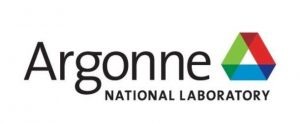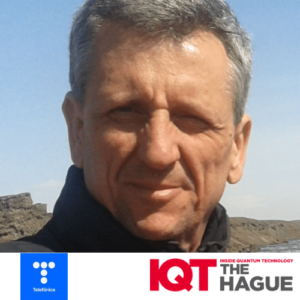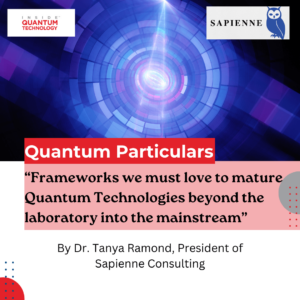
Quantum News Briefs 30. oktober:
SK telecom to launch subscription-based quantum-safe communication service
 SK telecom announced on October 26 that it will launch quantum key distribution as a Service (QaaS), a subscription-based quantum-safe communication service, in partnership with quantum company IDQ. Quantum News Briefs summarizes the article written byJeong Ho-jun and Yoon Yeon-hae from South Korea’s Pulse.
SK telecom announced on October 26 that it will launch quantum key distribution as a Service (QaaS), a subscription-based quantum-safe communication service, in partnership with quantum company IDQ. Quantum News Briefs summarizes the article written byJeong Ho-jun and Yoon Yeon-hae from South Korea’s Pulse.
ID Quantique and SK Telecom elebrated the fifth anniversary of their landmark partnership in October this year. Entering a new phase of collaboration, the two companies join forces to accelerate the market adoption of quantum-safe security and quantum sensing solutions through fruitful projects and partnerships. ID Quantique and SK Telecom have successfully delivered several innovative projects, beginning in 2019 when IDQ’s Quantum Key Distribution (QKD) technology was deployed over SK Telecom’s 5G backbone.
The company plans to expand QaaS going forward, focusing on customers that require high security, such as in the public, medical, and financial sectors
QaaS was first applied to global data center company Equinix Inc.’s SL1 Data Center in Sangam-dong, western Seoul. It is used to secure data centers that store large amounts of data and run artificial intelligence (AI) infrastructure. Click here for original Pulse article in-entirety.
BlueQubit’s algorithm chosen by DARPA: leveraging GPU simulators and infrastructure to advance Quantum AI

BlueQubit Inc., a technology company building quantum software and infra, ha announced its selection for the prestigious Defense Advanced Research Projects Agency (DARPA) project under the Imagining Practical Applications for a Quantum Tomorrow (IMPAQT) program. Quantum News Briefs summarizes.
This recognition emphasizes the company’s unwavering commitment to revolutionizing the quantum computing landscape, with a focus on development of quantum AI/ML algorithms for Noisy Intermediate-Scale Quantum (NISQ) devices.
Particularly noteworthy is BlueQubit’s collaboration with the renowned quantum hardware company,  QuEra. Their shared expertise on neutral-atom quantum computers – known for their scalability and improved gate fidelity – is central to the project.
QuEra. Their shared expertise on neutral-atom quantum computers – known for their scalability and improved gate fidelity – is central to the project.
“We’re on the cusp of a quantum leap in computing, and the DARPA IMPAQT award is a testament to the potential our team brings,” – Hrant Gharibyan. BlueQubit, with its collaborative network of esteemed researchers from leading US institutions and tech maestros in high-performance computing, is poised to overcome classical limitations and march toward quantum advantage with innovation in hybrid quantum/classical computing approach.
BlueQubit Inc. extends its gratitude to DARPA for this opportunity and remains steadfast in its mission: pushing the boundaries of quantum computing and setting new industry standards.
Klik her for at læse hele meddelelsen.
Argonne researchers report major milestone toward future quantum computing architecture
 A team led by the U.S. Department of Energy’s (DOE) Argonne National Laboratory has achieved a major milestone toward future quantum computing. They have extended the coherence time for their novel type of qubit to an impressive 0.1 milliseconds — nearly a thousand times better than the previous record. Quantum News Briefs summarizes the ScienceDaily article.
A team led by the U.S. Department of Energy’s (DOE) Argonne National Laboratory has achieved a major milestone toward future quantum computing. They have extended the coherence time for their novel type of qubit to an impressive 0.1 milliseconds — nearly a thousand times better than the previous record. Quantum News Briefs summarizes the ScienceDaily article.
The team’s qubits encode quantum information in the electron’s motional (charge) states. Because of that, they are called charge qubits.
“Among various existing qubits, electron charge qubits are especially attractive because of their simplicity in fabrication and operation, as well as compatibility with existing infrastructures for classical computers,” said Dafei Jin, a professor at the University of Notre Dame with a joint appointment at Argonne and the lead investigator of the project. “This simplicity should translate into low cost in building and running large-scale quantum computers.
The team’s qubit is a single electron trapped on an ultraclean solid-neon surface in a vacuum. The neon is important because it resists disturbance from the surrounding environment. Neon is one of a handful of elements that do not react with other elements. The neon platform keeps the electron qubit protected and inherently guarantees a long coherence time.
Following continued experimental optimization, the team not only improved the quality of the neon surface but also significantly reduced disruptive signals. As reported in Nature Physics, their work paid off with a coherence time of 0.1 milliseconds. That is about a thousand-fold increase from the initial 0.1 microseconds. Click here to read the ScienceDaily in-entirety.
Kinesiske forskere annoncerer rekordstor kvanteteleportering opnået over storbyområder
 Et team af videnskabsmænd, ledet af prof. Guangcan Guo og prof. Qiang Zhou fra University of Electronic Science and Technology i Kina (UESTC), der samarbejder med prof. Lixing You fra Shanghai Institute of Microsystem and Information Technology ved det kinesiske videnskabsakademi , har forbedret teleporteringshastigheden til 7.1 qubits per sekund for første gang baseret på "No. 1 Metropolitan Quantum Internet of UESTC”. Dette præsenterer en ny rekord for kvanteteleporteringssystemet over storbyområdet. Quantum News Briefs opsummerer SciTech-meddelelsen den 19. oktober.
Et team af videnskabsmænd, ledet af prof. Guangcan Guo og prof. Qiang Zhou fra University of Electronic Science and Technology i Kina (UESTC), der samarbejder med prof. Lixing You fra Shanghai Institute of Microsystem and Information Technology ved det kinesiske videnskabsakademi , har forbedret teleporteringshastigheden til 7.1 qubits per sekund for første gang baseret på "No. 1 Metropolitan Quantum Internet of UESTC”. Dette præsenterer en ny rekord for kvanteteleporteringssystemet over storbyområdet. Quantum News Briefs opsummerer SciTech-meddelelsen den 19. oktober.
At demonstrere højhastigheds kvanteteleportering uden for et laboratorium involverer en hel række udfordringer. Dette eksperiment viser, hvordan disse udfordringer kan overvindes, og dermed etablerer det en vigtig milepæl mod fremtidens kvanteinternet,” sagde prof. Qiang Zhou, som er den tilsvarende forfatter til dette værk. Den største eksperimentelle udfordring i et kvanteteleporteringssystem i den virkelige verden er at udføre Bell state-målingen (BSM).
For at sikre den vellykkede kvanteteleportering og forbedre effektiviteten af BSM, skal Alices og Bobs fotoner ikke kunne skelnes hos Charlie efter langdistancetransmission i fiber. Holdet udviklede et fuldt kørende feedback-system, som realiserede den hurtige stabilisering af vejlængdeforskellen og polarisering af fotonerne.
Holdet brugte både kvantetilstandstomografi og lokketilstandsmetoder til at beregne teleportationstroskaberne, som var et godt stykke over den klassiske grænse (66.7%), hvilket bekræfter, at højhastigheds kvanteteleportering i storbyområder er blevet opnået.
Den "Nr. 1 Metropolitan Quantum Internet of UESTC" forventes at udvikle en "high speed, high fidelity, multi-users, long-distance" kvanteinternetinfrastruktur i fremtiden ved at kombinere integrerede kvantelyskilder, kvanterepeatere og kvanteinformationsknuder. Holdet forudser også, at denne infrastruktur yderligere vil fremme den praktiske anvendelse af kvanteinternet. Klik her for at læse hele SciTech-artiklen.
Sandra K. Helsel, ph.d. har forsket og rapporteret om grænseteknologier siden 1990. Hun har sin ph.d. fra University of Arizona.
- SEO Powered Content & PR Distribution. Bliv forstærket i dag.
- PlatoData.Network Vertical Generative Ai. Styrk dig selv. Adgang her.
- PlatoAiStream. Web3 intelligens. Viden forstærket. Adgang her.
- PlatoESG. Kulstof, CleanTech, Energi, Miljø, Solenergi, Affaldshåndtering. Adgang her.
- PlatoHealth. Bioteknologiske og kliniske forsøgs intelligens. Adgang her.
- Kilde: https://www.insidequantumtechnology.com/news-archive/quantum-news-briefs-october-30-sk-telecom-to-launch-subscription-based-quantum-safe-communication-service-bluequbits-algorithm-chosen-by-darpa-leveraging-gpu-simulators-and-infrastructure/
- :har
- :er
- :ikke
- 1
- 19
- 2019
- 2023
- 26 %
- 30
- 5G
- 66
- 7
- a
- Om
- over
- Academy
- fremskynde
- opnået
- Vedtagelse
- fremme
- fremskreden
- Fordel
- Efter
- agentur
- AI
- AI / ML
- algoritme
- algoritmer
- også
- beløb
- an
- ,
- og infrastruktur
- Anniversary
- Annoncere
- annoncerede
- Fondsbørsmeddelelse
- Anvendelse
- applikationer
- anvendt
- udnævnelse
- tilgang
- arkitektur
- ER
- Argonne National Laboratory
- arizona
- artikel
- kunstig
- kunstig intelligens
- Kunstig intelligens (AI)
- AS
- At
- attraktivt
- forfatter
- tildeling
- Backbone
- baseret
- BE
- fordi
- været
- Begyndelse
- Bell
- Bedre
- både
- grænser
- Bringer
- Bygning
- men
- by
- beregne
- kaldet
- CAN
- center
- Centers
- central
- udfordre
- udfordringer
- afgift
- Charlie
- Kina
- kinesisk
- valgt
- klik
- CO
- samarbejde
- kollaborativ
- kombinerer
- engagement
- Kommunikation
- Virksomheder
- selskab
- Selskabs
- kompatibilitet
- fuldføre
- computere
- computing
- fortsatte
- samarbejder
- Tilsvarende
- Koste
- cusp
- Kunder
- DARPA
- data
- Data Center
- datacentre
- Forsvar
- Defence Advanced Research Projects Agency
- leveret
- Afdeling
- indsat
- udvikle
- udviklet
- Udvikling
- Enheder
- forskel
- forstyrrende
- fordeling
- do
- doe
- effektivitet
- elektronisk
- elementer
- understreger
- selvstændige
- sikre
- indtastning
- Miljø
- Equinix
- især
- indfører
- værdsat
- eksisterende
- Udvid
- forventet
- eksperiment
- eksperimenterende
- ekspertise
- udvider
- FAST
- tilbagemeldinger
- troskab
- finansielle
- Fornavn
- første gang
- Fokus
- fokusering
- Til
- Forces
- prognoser
- Videresend
- fra
- Frontier
- fuldt ud
- yderligere
- fremtiden
- fremtidig kvanteberegning
- gate
- Global
- gå
- GPU
- taknemmelighed
- garantier
- håndfuld
- Hardware
- Have
- overskrift
- dermed
- hende
- link.
- Høj
- Høj ydeevne
- Hvordan
- HTML
- HTTPS
- Hybrid
- ID
- billede
- vigtigt
- imponerende
- Forbedre
- forbedret
- in
- Inc.
- Forøg
- industrien
- industristandarder
- oplysninger
- informationsteknologi
- Infrastruktur
- infrastruktur
- sagens natur
- initial
- Innovation
- innovativ
- indvendig
- Inde i Quantum Technology
- Institut
- institutioner
- integreret
- Intelligens
- Internet
- ind
- IT
- ITS
- deltage
- fælles
- jpg
- holder
- Nøgle
- kendt
- Koreas
- laboratorium
- vartegn
- landskab
- stor
- storstilet
- lancere
- føre
- førende
- Leap
- Led
- Længde
- løftestang
- lys
- GRÆNSE
- begrænsninger
- Lang
- Lav
- Main
- større
- Marts
- Marked
- max-bredde
- måling
- medicinsk
- metoder
- milepæl
- millisekunder
- Mission
- mere
- national
- Natur
- næsten
- Behov
- Neon
- netværk
- Ny
- nyheder
- noder
- bemærkelsesværdigt
- roman
- Oktober
- oktober
- of
- off
- on
- ONE
- kun
- drift
- Opportunity
- optimering
- ordrer
- original
- Andet
- vores
- uden for
- i løbet af
- Overvind
- betalt
- Partnerskab
- partnerskaber
- sti
- per
- udfører
- fase
- Fotoner
- PHP
- Fysik
- planer
- perron
- plato
- Platon Data Intelligence
- PlatoData
- klar
- indsendt
- potentiale
- Praktisk
- gaver
- prestigefyldte
- tidligere
- Professor
- Program
- projekt
- projekter
- fremme
- beskyttet
- offentlige
- puls
- Pushing
- kvalitet
- Quantum
- kvantefordel
- QuantumAI
- kvantecomputere
- quantum computing
- kvanteinformation
- Kvante internet
- kvante software
- kvante teknologi
- qubit
- qubits
- rækkevidde
- Sats
- Reagerer
- Læs
- virkelige verden
- gik op for
- anerkendelse
- optage
- Reduceret
- resterne
- Kendt
- indberette
- rapporteret
- Rapportering
- kræver
- forskning
- forskere
- Revolutionerende
- Kør
- kører
- s
- Said
- Skalerbarhed
- Videnskab
- Videnskab og Teknologi
- VIDENSKABER
- forskere
- Anden
- sikker
- sikkerhed
- valg
- Seoul
- tjeneste
- sæt
- indstilling
- flere
- Shanghai
- delt
- hun
- bør
- Shows
- signaler
- betydeligt
- enkelhed
- siden
- enkelt
- Software
- Løsninger
- Kilder
- Syd
- hastighed
- standarder
- Tilstand
- Stater
- standhaftige
- butik
- vellykket
- Succesfuld
- sådan
- overflade
- Omkringliggende
- systemet
- hold
- tech
- Teknologier
- telecom
- testamente
- end
- at
- Fremtiden
- deres
- Disse
- de
- denne
- i år
- tusinde
- Gennem
- tid
- gange
- til
- i morgen
- mod
- mod
- Oversætte
- sand
- to
- typen
- os
- under
- universitet
- urokkelig
- us
- anvendte
- Vacuum
- forskellige
- var
- GODT
- var
- Western
- hvornår
- som
- WHO
- Hele
- vilje
- med
- Arbejde
- skriftlig
- år
- Du
- zephyrnet












